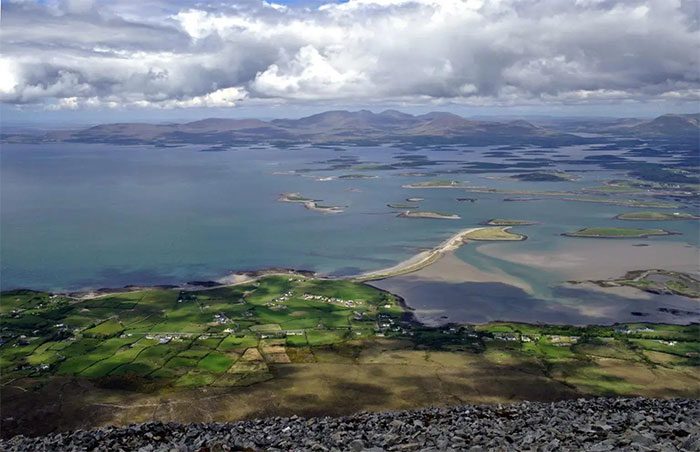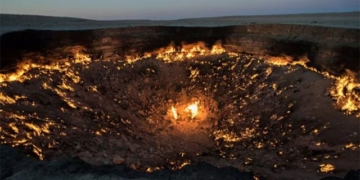During a timely survey, as a man was cutting seaweed in the area, Irish archaeologists unexpectedly discovered a “ghost fortress.”
According to Heritage Daily, an mysterious fortress dating back to 3,000 years was found during the survey of Clew Bay on the west coast of Ireland.
The initial discovery was made by freelance archaeologist Michael Gibbons, who identified a large double wall cutting across a land bridge that is submerged at high tide, connecting Collanmore Island to the mainland.

The coastal area where the ghost fortress emerged – (Photo: Mariusz Z).
So far, this stronghold has remained unexplored as it is submerged underwater at high tide and covered by seaweed at low tide.
Gibbons’ team, along with another archaeological group, happened to conduct a survey of the area while a man was cutting seaweed there, inadvertently leading to the discovery of the fortress remnants.
Parts of the fortifications are made of limestone, located within a 200-300m diameter area, and were constructed during the Bronze Age in the region – from 1100 to 900 BC.
This location may have provided Bronze Age inhabitants with a strategic advantage.
Similar fortifications have previously been found at various coastal and lakeside forts along the west coast of Ireland.
Gibbons reported the discovery of the fortress to the National Monuments Service, along with a stone-lined grave he found on the opposite coast of Omey Island.
This grave was revealed by a strong wave along the coast that eroded sand from the area, exposing ancient structures that are almost rectangular in shape.




















































